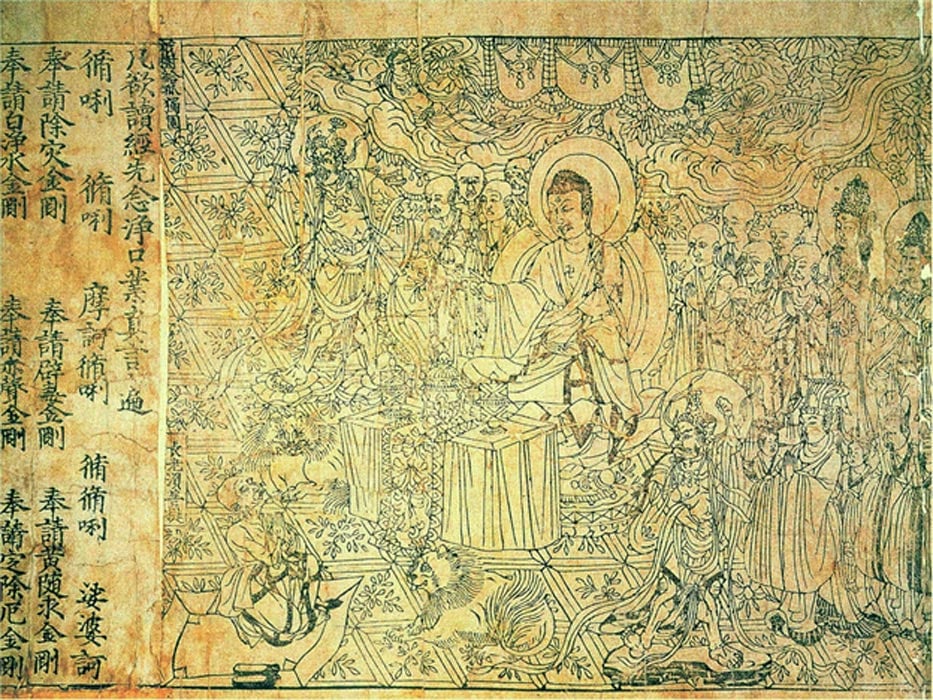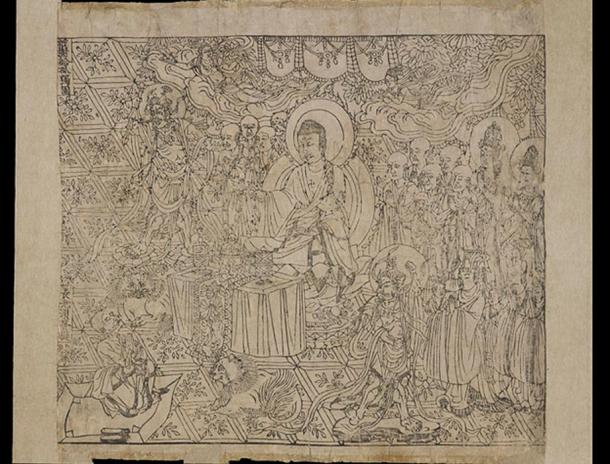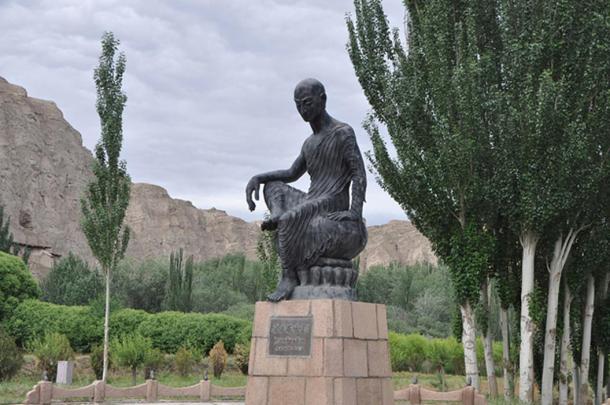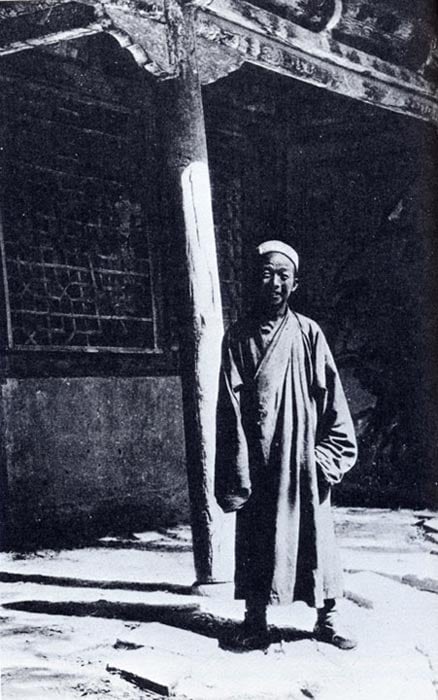
28 JUNE, 2016 - 00:41 DHWTY
The Diamond Sutra: The Oldest Known Printed Book in the World
The Vajracchedika Prajnaparamita Sutra has been translated from Sanskrit into English variously as the Diamond Sutra , the Diamond Cutter Sutra , the Vajra Sutra and the Vajra Cutter Sutra . This sutra (a Sanskrit word that means a religious teaching or sermon, in particular that of the Buddha) is commonly regarded as one of the most revered texts of Mahayana Buddhism. A copy of this sacred text, which was discovered in the Mogao Caves of Dunhuang, China, has been described as being “the world's earliest complete survival of a dated printed book”.
The Diamond Sutra is part of a larger canon of early Mahayana sutras known as the Prajnaparamita (meaning ‘Perfection of Wisdom’) Sutras. Another well-known sutra in this canon is the Heart Sutra. According to Mahayana Buddhist legend, these sutras were dictated by the Gautama Buddha to his various disciples. These sacred teachings were then kept hidden for 500 years, and is said to have only been discovered when mankind was prepared to learn from them. Scholars, however, are of the opinion that this canon was not created over a few years, but over the centuries.
Whilst these sutras began to be written during the 1 st century BC, the canon was only completed several centuries later.
The Diamond Sutra is said to be a brief text, and it has been claimed that a typical English translation would contain about 6000 words. Nevertheless, the message it contains is deeply profound, and is open to various interpretations. Perhaps one of the most basic interpretations of the Diamond Sutra is that it is an exhortation by the Buddha to his followers to “cut through the illusions of reality that surround them”, and thus coming to a realization of that which is real.

Frontispiece of the Chinese Diamond Sutra. ( Public Domain )
It is believed that the Diamond Sutra was first translated into Chinese in 401 AD by a Buddhist monk by the name of Kumarajiva. It has been stated that, in the following century, Prince Zhao Ming, a son of the Emperor Wu of Liang, divided the sutra into 32 chapters, and gave each one of them a title. Though these titles are not always used today, these divisions are still in use even today. Another important event in the history of the Diamond Sutra is the enlightenment of Huineng, the Sixth and Last Patriarch of Chan Buddhism. According to Huineng’s autobiography, whist the monk was an adolescent selling firewood in the marketplace, he heard the Diamond Sutra being recited, and as a result, attained enlightenment.

Statue of Kumarajiva in front of the Kizil Caves in Kuqa, Xinjiang province, China. ( CC BY-SA 3.0 )
During the beginning of the 20 th century, a Taoist priest by the name of Wang Yuanlu was the self-appointed caretaker of the Mogao Caves in Dunhuang, China. It was during this time that Wang discovered a secret cache of ancient manuscripts, now referred to as the Dunhuang manuscripts. Amongst these ancient treasures was a copy of the Diamond Sutra, which has been described as “the world's earliest complete survival of a dated printed book”.
The person who commissioned this manuscript, as well as its date of production, can be found on the colophon on its inner end. The colophon reads as follows:
“‘Reverently [caused to be] made for universal free distribution by Wang Jie on behalf of his two parents on the 13th of the 4th moon of the 9th year of Xiantong [i.e. 11th May, AD 868].”

Early Photo of Wang Yuanlu. ( Public Domain )
In 1907, the Hungarian-British archaeologist, Sir Aurel Stein, arrived in Dunhuang, and visited the Mogao Caves. He met Wang Yuanlu, and for 130 pounds, managed to bring back to London 24 cases which were filled with manuscripts, as well as five boxes full of paintings, embroideries and art relics. The Diamond Sutra was amongst these artifacts. A different perspective has been given by the National Library of Peking in 1961, which claims that the sutra “was stolen over fifty years ago” by Stein. As a result of its purchase / theft, the copy of the Diamond Sutra from the Mogao Caves is today being housed in the British Library in London.
By Wu Mingren
References
Daley, J., 2016. Five Things to Know About the Diamond Sutra, the World’s Oldest Dated Printed Book. [Online]
Available at:
http://www.smithsonianmag.com/smart-...959052/?no-ist
diamond-sutra.com, 2016. Diamond Sutra – A New Translation. [Online]
Available at:
http://diamond-sutra.com/
Morgan, J., 2012. Buddhism’s Diamond Sutra: The Extraordinary Discovery Of The World’s Oldest Book. [Online]
Available at:
http://www.huffingtonpost.com/joyce-...b_1859164.html
O'Brien, B., 2016. The Diamond Sutra. [Online]
Available at:
http://buddhism.about.com/od/thepraj...mond-Sutra.htm
Silkroad Foundation, 2000. The Oldest Printed Text in the World - The Diamond Sutra. [Online]
Available at:
http://www.silk-road.com/artl/diamondsutra.shtml
The British Library Board, 2016. Diamond Sutra. [Online]
Available at:
http://www.bl.uk/onlinegallery/sacre...mondsutra.html